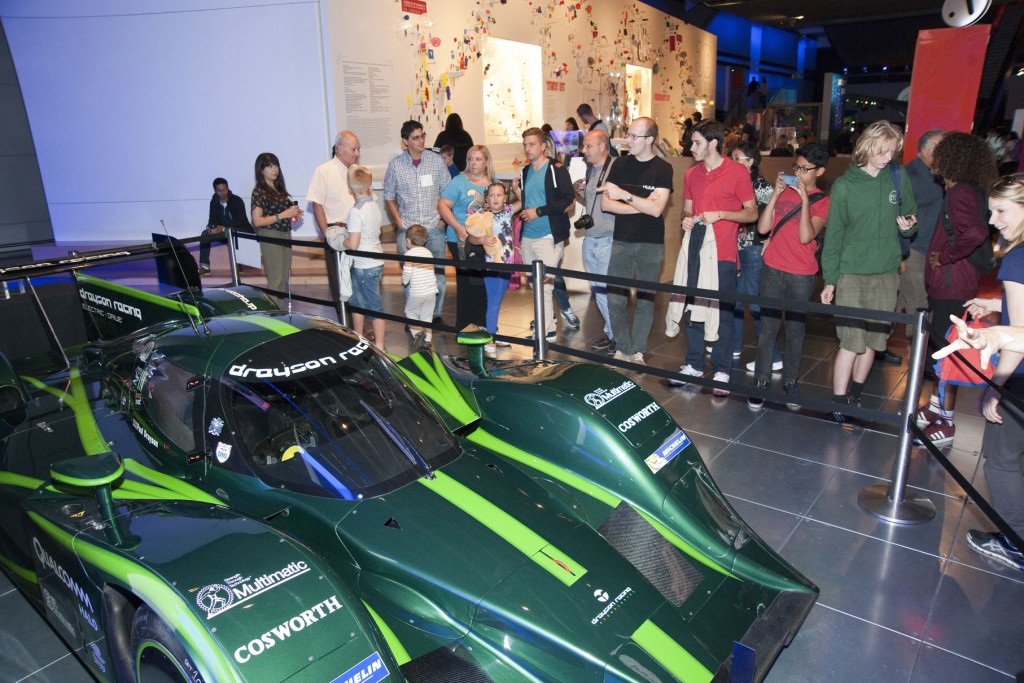Last month, we invited engineers from the Power Electronics Group to the Science Museum to share their latest research with our visitors. They are working on wireless charging systems to power up electric car batteries, and with them came the Drayson Racer, the fastest lightweight electric car in the world. This beautiful, green piece of precision engineering is fast; it broke records at 205mph and can go 0 to 60 in 3 seconds.
This week super speedy cars, much like the Drayson racer, will take part in Formula E; the first ever fully electric racing series, starting off in Beijing. The cars in Formula E aren’t quite as fast as the one we had on display, but with top speeds of 140mph it will definitely be entertaining to watch.

There are a few aspects of the Formula E that make it, in my opinion, the best type of racing there is:
Car Swapping
One of the major issues of electric cars is battery life. The racing cars used in Formula E can’t be charged quick enough at the pit stops so the drivers swap to a fully charged car. Given it’s a race the drivers need to hop out and into the other car within a minute. I think it provides an bonus ‘obstacle course’ like challenge that petrol racing really lacks.
Exotic Locations
Yes Formula 1 has exotic location, but Formula E has raised the game. The races will be in the heart of some of the most stunning capital cities in the world. Starting in the Olympic park in Beijing the championship will travel round to 10 cities including Berlin, Buenos Aires, Miami, and finishing up in central London in June 2015.
Futuristic Sounding
Electric cars engines are virtually silent. There’ll be no need for ear plugs while watching and given the city centre locations the races won’t be bothering the neighbours as much as petrol racing might. The sound Formula E cars make when racing has been described as anything from eerie to futuristic. They’re so quiet the engineers have to be warned with an air horn before the car come into the pit stops so they can get out of the way in time.
Fanboost
There’s virtually no interaction with the drivers for fans of racing, especially compared to other sports. The drivers can’t hear you cheering, not until they’re no the podium and by that time your encouragements don’t make any difference. Not so in Formula E, you can vote for your favourite driver before the race. The three most popular driver’s get a ‘power boost’ for their cars in the last leg of race.
Formula E will drive innovation in electric cars that’ll quickly trickle down to their domestic counterparts. In the not too distant future the wireless charging system the Power Electronics Group showed our visitors could be in parking spots all over the country ready to charge your electric car.
You can find out more about Formula E by watching the video below.